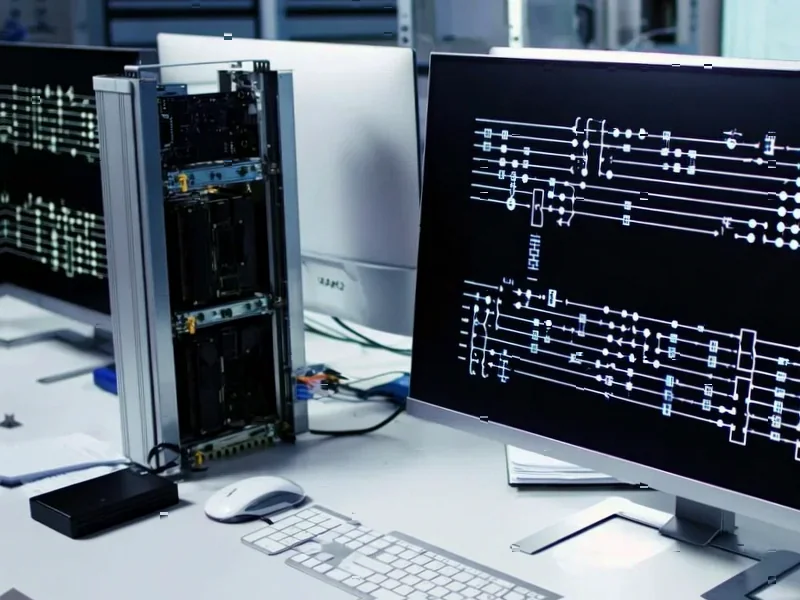According to Guru3D.com, OpenAI is partnering with Amazon Web Services in a massive $38 billion deal to expand its computing capacity for AI training and deployment. Instead of building new data centers, OpenAI will rent space in AWS facilities using Nvidia’s advanced GB200 and GB300 hardware, with the GB300 setup capable of running up to 72 Blackwell GPUs delivering 360 petaflops of performance and 13.4 terabytes of HBM3e memory. The deployment involves “hundreds of thousands of GPUs” with potential scaling to “tens of millions of CPUs,” with rollout completion expected by end of 2026 and potential extension into 2027. This strategic move, according to the company’s announcement, positions AWS to manage physical hardware while OpenAI runs AI workloads through EC2 systems, providing flexibility without maintaining its own global data center network.
The Infrastructure Paradigm Shift
This deal represents a fundamental rethinking of how AI companies approach computational resources. For years, there’s been an implicit assumption that leading AI labs would eventually build and operate their own massive data centers—much like Google, Amazon, and Microsoft did during the cloud computing revolution. OpenAI’s decision to double down on cloud infrastructure instead suggests that the economics and operational complexity of running AI-scale computing may favor specialization. The cloud providers have spent decades perfecting global infrastructure management, power optimization, and hardware lifecycle management—capabilities that are increasingly critical as AI models demand unprecedented scale and reliability.
Nvidia’s Unshakable Dominance
Despite AWS developing its own Trainium2 AI chips, OpenAI’s insistence on Nvidia hardware speaks volumes about the current state of AI acceleration. The GB300’s specifications—particularly the 13.4 terabytes of HBM3e memory—are crucial for training next-generation models that may exceed current parameter counts by orders of magnitude. This decision suggests that custom AI chips, while improving, still can’t match Nvidia’s full-stack advantage encompassing hardware, software, and ecosystem. The partnership effectively makes AWS a channel for Nvidia’s most advanced technology, creating a symbiotic relationship where cloud providers become the vehicle for delivering cutting-edge AI hardware to customers who can’t justify building their own infrastructure.
Competitive Landscape Reshuffle
This deal creates fascinating dynamics in the cloud AI wars. Microsoft, OpenAI’s primary investor and previous exclusive cloud provider, now finds its partner deepening relationships with a direct competitor. This multi-cloud strategy gives OpenAI unprecedented leverage and redundancy—they’re no longer dependent on a single provider’s roadmap or capacity constraints. For AWS, securing such a high-profile AI customer validates their infrastructure against Microsoft’s perceived AI advantage. We’re likely to see other AI companies adopt similar multi-cloud strategies, forcing cloud providers to compete on both price and specialized AI capabilities rather than locking customers into exclusive arrangements.
The Scale Economy Reckoning
The sheer magnitude of this commitment—$38 billion represents one of the largest cloud computing deals in history—signals that we’re entering a new phase of AI development where computational requirements are becoming the primary constraint on progress. When companies are willing to commit tens of billions to secure computing capacity, it suggests they anticipate models growing exponentially more complex and resource-intensive. This level of investment creates an increasingly high barrier to entry for new competitors and could accelerate consolidation in the AI space as smaller players struggle to access comparable computational resources at competitive prices.
Future Implications and Industry Trajectory
Looking 12-24 months ahead, this partnership will likely catalyze several industry trends. First, we’ll see increased specialization in cloud AI offerings, with providers optimizing their stacks for specific types of AI workloads. Second, the relationship between AI software companies and cloud infrastructure providers will become more nuanced—partnership rather than ownership appears to be the emerging model. Finally, this deal could accelerate the development of even more specialized AI hardware as cloud providers seek differentiation beyond simply reselling Nvidia GPUs. The era of AI companies building everything from chips to applications may be giving way to a more modular, ecosystem-driven approach where each player focuses on their core competencies.




